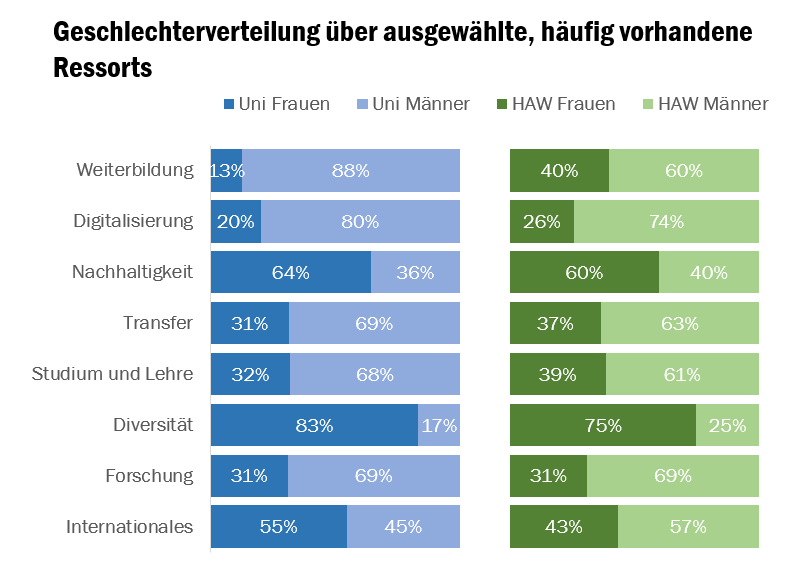 Foto: Pixabay
Foto: Pixabay39 per cent of all deputy positions at state higher education institutions (HEIs) in Germany are held by women. Most of them are heads of Diversity, Sustainability or International Affairs. In contrast, male vice-rectors or vice-presidents are more strongly represented in the areas of Digitalisation or Research. The most common portfolios are Research, Teaching, Learning, International Affairs, and Transfer. These are the findings of an analysis conducted by the CHE Centre for Higher Education.
Vice-presidents and vice-rectors at German HEIs play an important role in the organisation and management of their institutions. Their portfolios vary from one university to another and, through increasing differentiation, increasingly reflect the focus and profile of each HEI. Isabel Roessler has now evaluated the portfolio profiles of 188 state HEIs for a CHECK by the CHE Centre for Higher Education.
There are currently 217 female vice-presidents or vice-rectors at Germany’s 188 universities and universities of applied sciences (UASs). This means that the proportion of women at the second management level in Germany’s state HEIs is 39 per cent. The percentage of women among vice-presidents is thus significantly higher than among university heads, where it is only 29 per cent. Germany’s federal states with the highest proportion of females in vice positions are Bremen, Hamburg and Saxony-Anhalt (67 per cent).
There are clear patterns in the gender distribution of deputy heads of HEIs by portfolio, as analysed by the CHE Centre for Higher Education. Digitalisation and Research have the highest proportion of men in both types of HEI. In almost nine out of ten cases, the portfolio for Continuing Education at universities is held by a male vice-president or vice-rector. In contrast, the highest proportions of women are found in Diversity, Sustainability and International Affairs at both universities and UASs.


In addition to the dominant combination of “Learning and Teaching” at both types of HEI, the area of Research at universities is organised very differently in the Executive Board. These range from “Research and Early Career Researchers” at fifteen universities to the unique area of “Research, Social Dialogue and Outreach” at one HEI.
The five most common portfolios in both types of HEI are Research, Teaching, Learning, International Affairs, and Transfer. “The issue of transfer has become increasingly important for many HEIs in recent years, reflected in the strong departmental responsibility at management level. Two-thirds of UASs now address transfer at management level,” stated Roessler. Saxony is the only federal state where there are still universities of applied sciences without an Executive Board member explicitly responsible for transfer issues.
About the analysis:
Isabel Roessler wrote the “CHECK – Ressortzuschnitte der Vizepräsident*innen und Prorektor*innen an deutschen Universitäten und Hochschulen für angewandte Wissenschaften” (CHECK – Portfolio profiles of vice-presidents and vice-rectors at German universities and universities of applied sciences). The information published online on the executive boards and rectorates of 188 state-run HEIs in Germany (as of April and August 2023) was analysed. Further data on heads of higher education institutions in Germany can also be found in the annually updated
CHECK - Ressortzuschnitte der Vizepräsident*innen und Prorektor*innen an deutschen Universitäten und Hochschulen für angewandte Wissenschaften 27. November 2023 2.07 MB 5010 downloads
Roessler, Isabel: CHECK - Ressortzuschnitte der Vizepräsident*innen und Prorektor*innen...Bildquelle: Pixabay
